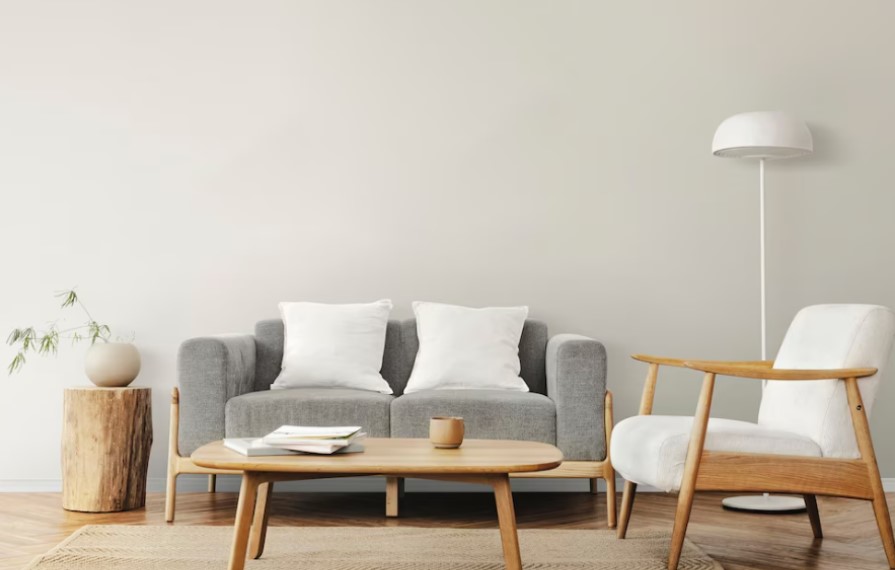Interior design is more than just a visual experience; it profoundly impacts our emotional and psychological well-being. The way we arrange and decorate our spaces can influence our mood, behavior, and overall mental health. This article delves into the psychology of space, exploring how various elements of interior design affect our emotions and behavior.
Historical Context of Interior Design and Psychology
The connection between interior spaces and human psychology is not a new concept. Historical figures like the ancient Chinese with Feng Shui principles and the ancient Greeks with their emphasis on proportion and harmony in architecture have long understood the influence of physical spaces on well-being. In more recent times, the field of environmental psychology has formally studied how our surroundings affect us, leading to deeper insights into how interior design can enhance our mental health.
The Role of Color
Color is one of the most powerful elements in interior design, with a profound impact on our emotions and psychological state. Different colors evoke different reactions:
- Blue: Often associated with calmness and serenity, blue can lower blood pressure and heart rate. It is an ideal choice for bedrooms and bathrooms, where relaxation is key.
- Red: This color is stimulating and energetic, increasing heart rate and arousal. Red is perfect for spaces where activity and excitement are desired, such as dining rooms and living rooms.
- Green: Representing nature and tranquility, green has a calming effect and can reduce anxiety. It works well in almost any room, especially in spaces intended for relaxation or study. Also this is something that is being used a lot by those seeking kitchen remodeling ideas.
- Yellow: Known for its cheerful and uplifting properties, yellow can enhance mood and energy. However, it should be used sparingly, as too much yellow can cause agitation.
Understanding the psychological effects of colors helps in choosing the right palette for different spaces to create the desired emotional responses.
Lighting and Mood
Lighting is another critical aspect of interior design that significantly influences mood and mental health. Natural light is particularly beneficial, as it boosts serotonin levels, improving mood and energy. Studies have shown that exposure to natural light can reduce depression and enhance overall well-being.
Artificial lighting also plays a crucial role. Warm lighting tends to create a cozy and inviting atmosphere, while cool lighting can increase alertness and focus. The placement of lighting fixtures, the use of dimmers, and the choice between ambient, task, and accent lighting can all contribute to the psychological impact of a space.
Space and Layout
The layout and organization of a space can either promote a sense of order and calm or lead to feelings of chaos and stress. An open floor plan, for example, can create a sense of freedom and spaciousness, which is psychologically uplifting. Conversely, cramped and cluttered spaces can contribute to anxiety and discomfort.
The concept of personal space, or the area immediately surrounding an individual that they consider their own, is also crucial. Ensuring that people have sufficient personal space in a room can reduce stress and enhance comfort. Additionally, the way furniture is arranged to promote social interaction or privacy can significantly affect how we feel in a space.
Furniture and Comfort
Furniture not only serves a functional purpose but also contributes to the overall mood of a room. Comfortable, ergonomic furniture can enhance physical well-being and reduce stress. The materials and textures used in furniture also play a role in our psychological experience. Soft, plush fabrics can create a sense of warmth and comfort, while hard, sleek surfaces can convey a more modern and efficient vibe.
The scale and proportion of furniture relative to the room size are also important. Oversized furniture in a small room can make the space feel cramped and overwhelming, while appropriately scaled furniture can enhance the sense of balance and harmony.
The Power of Nature
Incorporating elements of nature into interior design, known as biophilic design, has been shown to have numerous psychological benefits. Plants, natural materials like wood and stone, and views of nature can reduce stress, improve mood, and enhance cognitive function. The presence of natural elements in a space creates a sense of connection to the outdoors, which is inherently calming and restorative.
Personalization and Identity
Personalizing a space to reflect individual tastes and identities can significantly impact emotional well-being. When a room resonates with personal meaning and memories, it creates a sense of belonging and comfort. This personalization can be achieved through artwork, photographs, and personal mementos that tell a story about the inhabitants of the space.
Scent and Sensory Experience
The sense of smell is closely linked to memory and emotion, making scent an important aspect of interior design. Pleasant scents can evoke positive emotions and create a welcoming atmosphere. Essential oils, scented candles, and natural fragrances can be used to enhance the sensory experience of a room, contributing to a sense of well-being.
The Influence of Art and Aesthetics
Art and aesthetic elements in interior design have a profound impact on mood. Artwork, sculptures, and decorative objects can inspire, calm, and provoke thought. The choice of art should align with the intended mood of the space. For example, serene landscapes can promote relaxation, while vibrant abstracts can energize and stimulate creativity.
Acoustic Considerations
Sound is another important sensory element that affects our psychological state. Poor acoustics and excessive noise can lead to stress and discomfort. Designing spaces with good acoustic properties, such as sound-absorbing materials and strategic placement of furnishings, can create a more peaceful and enjoyable environment.
Psychological Impact of Different Spaces
Different types of spaces have distinct psychological impacts based on their design:
- Workspaces: Effective design of workspaces can enhance productivity, creativity, and job satisfaction. Ergonomic furniture, good lighting, and the incorporation of natural elements are key.
- Living Spaces: These should promote relaxation and social interaction. Comfortable seating, warm lighting, and personal touches are important.
- Bedrooms: These should be sanctuaries of rest and relaxation. Soft colors, comfortable bedding, and minimal clutter contribute to a restful environment.
- Public Spaces: The design of public spaces should promote inclusivity and comfort. Clear signage, accessible design, and inviting aesthetics are essential.
Conclusion
The psychology of space is a vital consideration in interior design, influencing how we feel, think, and behave in our environments. By understanding and applying principles related to color, lighting, space, furniture, nature, personalization, scent, art, and acoustics, we can create spaces that enhance our mental and emotional well-being. As we become more aware of these connections, the potential to design interiors that support and nurture our psychological health becomes an exciting and rewarding endeavor.



















